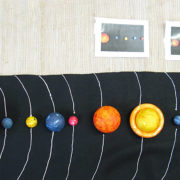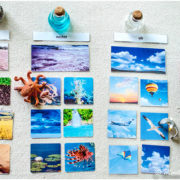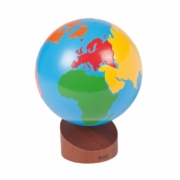Cultural: Parts of a frog
A primary focus of Montessori learning is to inspire children’s natural curiosity and our cultural lesson on parts of a frog does just that. Frogs are strange little creatures and it is great fun to think a bit more about their lifecycle and role in the ecosystem but to start, we like to teach children some basic bits about a frog’s anatomy.

We introduce parts of the frog to children with three-part cards: one card features the object (the frog, in this instance) and its name, another card includes just the object and then a third card has the relevant part name. Images are widely accessible online (if you’d like to try this activity at home) so you can easily print and make your own cards.
Once you’ve got your three-part cards sorted, the next step is to introduce the lesson to your child. Choose three or four of the most basic parts of the frog to start and once your child has learnt these, introduce some other more complex ones. Typically, the lesson includes a total of nine parts: frog, eyes, forelegs, hind legs, mouth, webbed feet, head, neck and trunk.
Watch the below by My Works Montessori to see how the lesson might be applied:
You’ll notice that the relevant part on each card is highlighted so that children can clearly locate it on the frog. The first few parts presented in the lesson are: frog, head, trunk and eyes, followed by webbed feet, hind legs, forelegs, mouth and neck.
The wonderful thing about this lesson format is that it can be applied to all animals as part of cultural learning.
If you’d like further information about this tutorial, feel free to contact us at info@saintandrewsmontessori.com. We’re happy to answer any questions.











